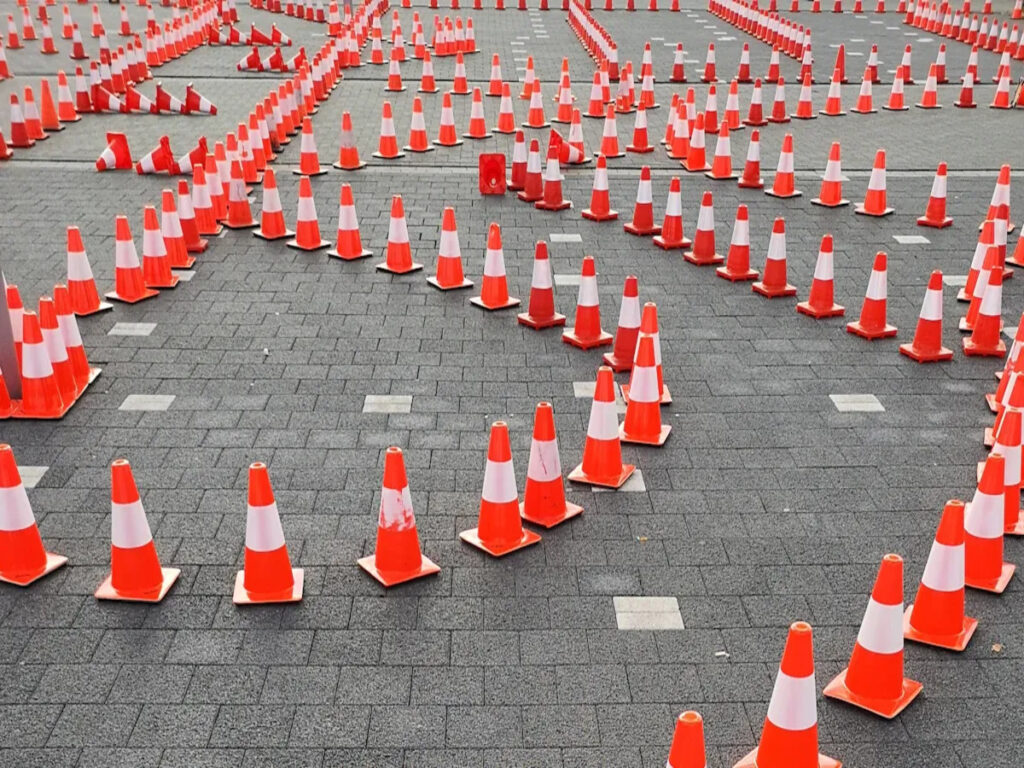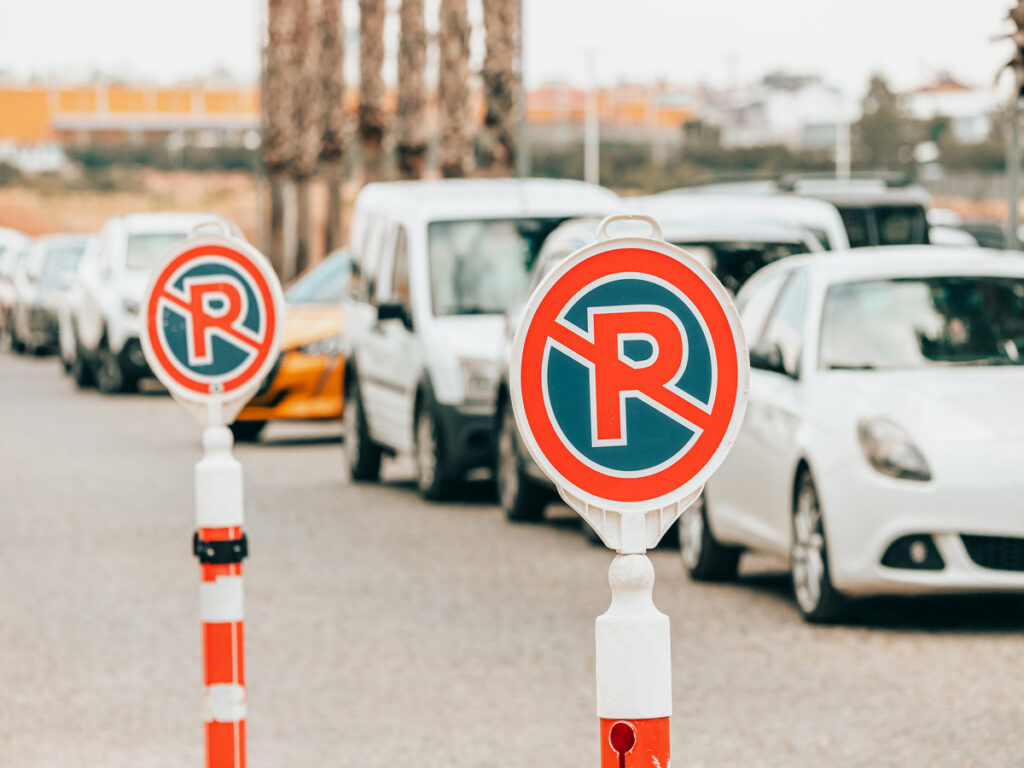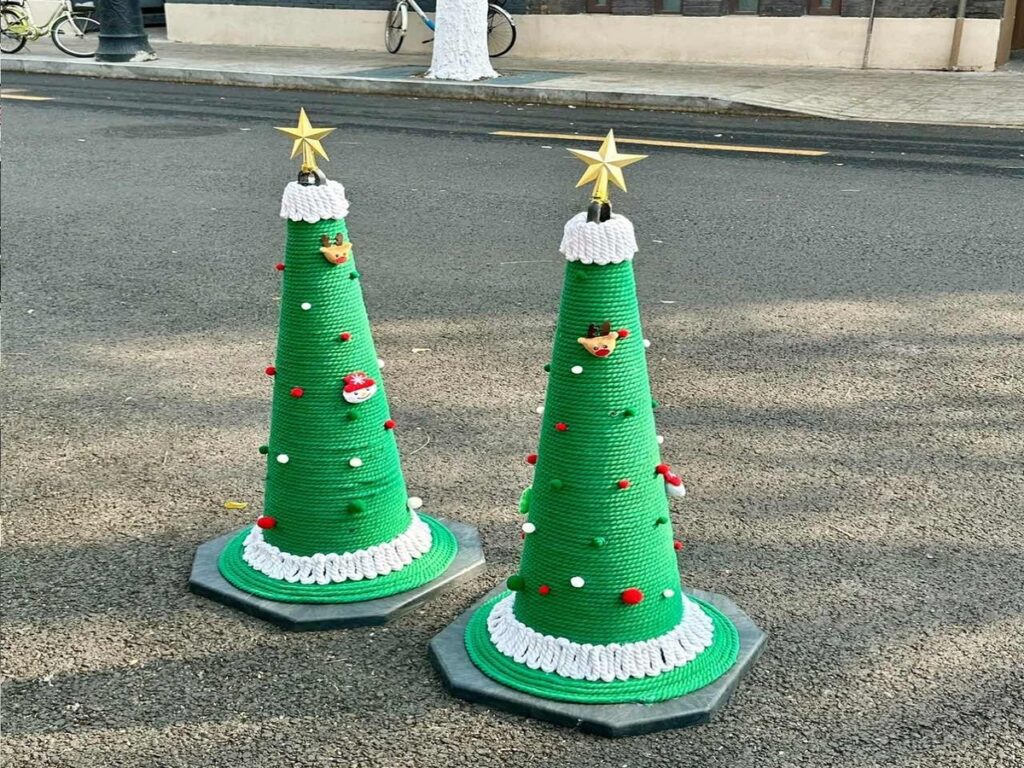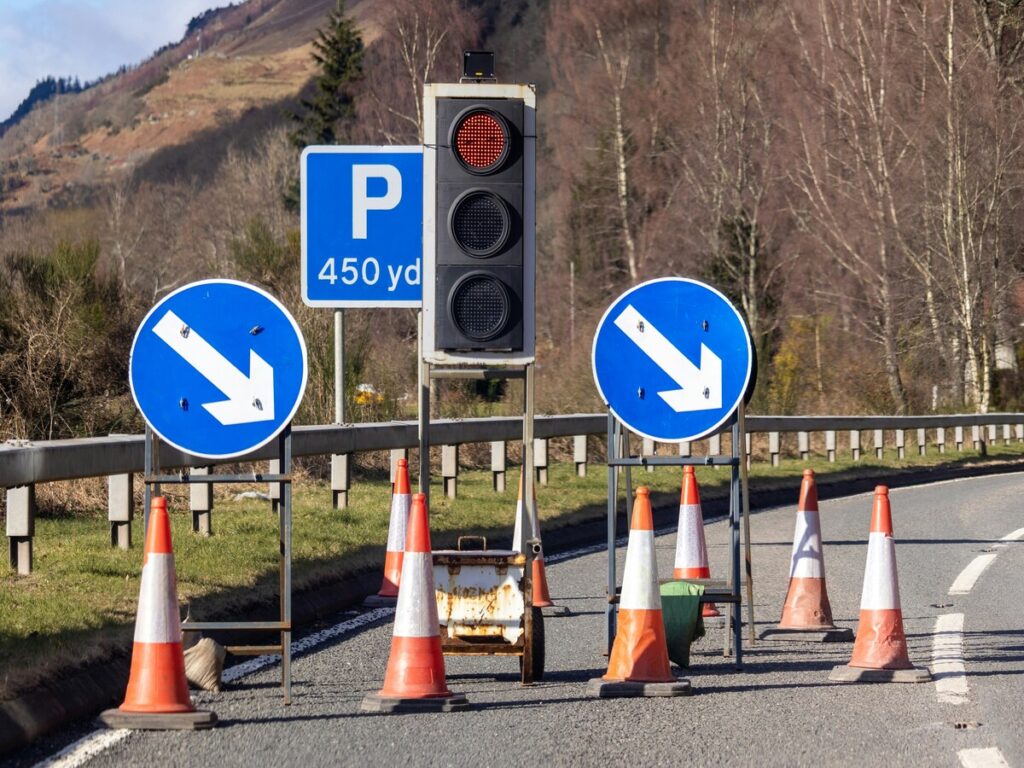
Conos de tráfico (Cono de transporte) son importantes para mantener seguros las carreteras y espacios de Japón. Deben seguir reglas estrictas sobre el tamaño, color, y colocación. Si está trabajando en un sitio de construcción o organizando un evento, Debes seguir estas reglas para evitar problemas. Si quieres comprar conos de tráfico (Cono de transporte) por trabajo, Conocer las reglas lo ayudará a seguir la ley y mantener a las personas seguras. Para comprar, Puede encontrar opciones confiables buscando conos de tráfico de compra (Compra de cono de transporte) para asegurarse de cumplir con todas las regulaciones.
En OPTRAFICO, Ofrecemos conos de tráfico de alta calidad a la venta que cumplen con todas las regulaciones de seguridad., Asegurar que permanezca cumpliendo mientras mantiene su lugar de trabajo o evento organizado y seguro. Comprar conos de tráfico de nosotros hoy para garantizar los más altos estándares de seguridad y confiabilidad.
Reglas legales para conos de tráfico en Japón
Los conos de tráfico en Japón no son solo para guiar el tráfico. Son herramientas de seguridad con reglas estrictas para mantener a las personas seguras. Conocer estas reglas lo ayuda a usarlas bien y evitar multas.
Jis estándares para conos de tráfico
El Estándares industriales japoneses (Él) Explicar cómo se deben hacer conos de tráfico. Estas reglas cubren su tamaño, forma, material, y color. Por ejemplo, los conos suelen ser 450 mm, 700milímetros, o 1000 mm de alto. Esto los hace fáciles de ver en lugares como estacionamientos o carreteras..
Las bandas reflectantes también son muy importantes. Ayudan a los conductores a ver los conos de tráfico por la noche o con tenue luz. Si quieres comprar conos en Japón, Verifique que cumplan con las reglas de JIS. Los conos que no siguen estas reglas pueden no ser seguros y podrían causar problemas legales.
Reglas de colocación por comisión de seguridad pública
El Comisión de Seguridad Pública también tiene reglas para usar conos de tráfico. Estas reglas pueden cambiar dependiendo del área. La policía local puede agregar reglas adicionales para la colocación del cono. Por ejemplo, Los conos en las carreteras públicas deben estar separados para una visibilidad clara. En zonas de trabajo, Los conos pueden necesitar señales de advertencia o barreras.
Hay reglas especiales para el uso nocturno. Los conos deben tener partes reflectantes o luces LED para mantenerse visibles en la oscuridad. Estas reglas ayudan a prevenir accidentes y mantener los espacios públicos seguros.
¿Quién puede usar conos de tráfico?
No todos pueden usar conos de tráfico en Japón. Solo ciertas personas, como trabajadores de la construcción o planificadores de eventos, puede usarlos. Estos usuarios deben seguir las reglas del gobierno. Uso de conos de tráfico sin permiso, como en las carreteras públicas, puede conducir a multas.
Si ejecuta un estacionamiento o planifica eventos, Debes usar conos correctamente. Esto incluye colocarlos correctamente y agregar herramientas como cinta de precaución o pesas cuando sea necesario.
Usos comunes de los conos de tráfico en Japón
Los conos de tráfico son muy importantes para mantener los lugares seguros en Japón. Se usan en muchas situaciones, cada uno con sus propias reglas.
Construcción y mantenimiento de carreteras
Los conos de tráfico a la venta son imprescindibles en los sitios de construcción de carreteras en Japón. Muestran a conductores y caminantes a dónde ir de forma segura. Los conos marcan las áreas de trabajo y guían el tráfico para evitar accidentes. Las bandas reflectantes o las luces LED los hacen fáciles de ver por la noche. El uso de conos de la manera correcta mantiene a los trabajadores y al público seguro.
Gestión del estacionamiento
Los conos de tráfico son útiles para administrar los estacionamientos. Muestran cierres temporales, autos directos, y organizar líneas. Los conos mantienen las cosas en orden y evitan que los conductores se confundan. También ayudan a los autos a encontrar puntos abiertos, Hacer el estacionamiento más fácil. Colocar conos mejora correctamente la experiencia para todos.
Eventos públicos y zonas de emergencia
En eventos públicos, conos controlan multitudes y bloquean puntos peligrosos. Es posible que vea conos de tráfico con cinta de precaución o luces LED para una mejor visibilidad. En emergencias, los conos crean zonas seguras y guían vehículos de rescate. El uso de conos adecuadamente mantiene las cosas seguras y organizadas en áreas ocupadas.
Consejo: Siempre verifique que sus conos de tráfico sigan los estándares industriales japoneses para mantenerse seguros y seguir las reglas.
Pautas de colocación para conos de tráfico
Reglas para la colocación de la carretera pública
Poner conos de tráfico en las carreteras debe seguir las reglas de seguridad. Estas reglas se aseguran de que los conos funcionen bien para proteger a las personas.. Los conos crean áreas seguras y guían a los trabajadores de emergencia durante los accidentes. También ayudan a los conductores a ver mejor con poca luz, detener los accidentes. Marcando zonas de peligro, Conos Bloque de entrada a lugares inseguros. Esto mantiene a los trabajadores y al público a salvo. Si está buscando comprar conos de tráfico, Asegúrese de cumplir con las regulaciones de seguridad para garantizar una protección y cumplimiento efectivos..
Asegúrese de que los conductores y caminantes puedan ver conos desde muy lejos. Úselos para mostrar áreas de trabajo, desvíos, o puntos de accidente claramente. Verifique siempre las reglas locales porque algunos lugares pueden tener reglas de colocación de cono adicionales.
Requisitos de visibilidad y espaciado
Los conos de tráfico deben ser brillantes y espaciados para guiar a las personas. Use conos con colores brillantes como el naranja para llamar la atención. Las bandas reflectantes o las luces LED las hacen más fáciles de ver con una luz tenue.. Colocar conos de manera uniforme para mostrar caminos o límites claramente. El espacio entre conos depende de la velocidad de tráfico. Por ejemplo, Los conos en las carreteras están separados más separados que en los estacionamientos.
No pongas los conos demasiado juntos, ya que esto puede confundir a los conductores. En cambio, Organizarlos de una manera clara y simple. El buen espacio ayuda a los conos a enviar el mensaje correcto.
Normas de colocación nocturna
Por la noche, Los conos deben ser fáciles de ver por seguridad. Se requieren collares reflectantes para que los conductores puedan detectarlos. Algunas pautas, como Aashto y NCHRP, Centrarse en la seguridad y la visibilidad nocturna. La siguiente tabla muestra reglas clave:
| Fuente de la guía | Descripción |
|---|---|
| Aashto | Establece reglas para el uso de cono, Centrarse en la seguridad y la visibilidad. |
| NCHRP | Da consejos para administrar el tráfico, incluida la colocación del cono. |
| Características reflectantes | Los conos necesitan collares reflexivos para ver por la noche. |
Puede agregar luces LED o señales de advertencia a conos para una mejor visibilidad. Estos pasos mantienen los conos útiles en la oscuridad, detener los accidentes y mantener las cosas organizadas.
Sanciones por mal uso de conos de tráfico
El uso de conos de tráfico de la manera incorrecta en Japón puede causar problemas. Estas reglas existen para mantener a las personas seguras y mantener el orden. Conocer las multas y los problemas legales lo ayuda a evitar problemas y usar conos correctamente.
Multas por uso no autorizado
Si usa conos de tráfico sin permiso, Podrías recibir una multa. En Japón, Solo ciertas personas, como trabajadores de la construcción o planificadores de eventos, puede colocar conos en áreas públicas. No se permite usar conos en carreteras o aceras sin aprobación. Las multas dependen del área, pero pueden variar desde unos pocos miles de yenes hasta decenas de miles de yenes.
El uso no autorizado puede confundir a los conductores o bloquear a los peatones. Por ejemplo, Usar conos para ahorrar lugares de estacionamiento en calles públicas es ilegal. Si las autoridades ven esto, podrían multarte de inmediato. Siempre revise las reglas locales antes de poner conos en lugares públicos.
Nota: En propiedad privada, como estacionamientos, Puede usar conos libremente si cumplen con las reglas de seguridad.
Consecuencias legales de obstrucción
Uso de conos mal puede conducir a más que multas. Bloquear el tráfico o crear peligros con conos puede romper la ley. Por ejemplo, colocar conos donde bloquean los vehículos de emergencia o las pasarelas van en contra Ley de tráfico de Japón. Esta ley se centra en la seguridad y el flujo de tráfico suave.
En casos graves, el mal uso puede causar accidentes. Si alguien se lastima por los conos fuera de lugar, podrías ser responsable. Podría tener que pagar por daños o enfrentar cargos penales. Para evitar esto, Siga siempre las reglas y use conos de forma segura. Si necesita comprar conos de tráfico, Asegúrese de elegir los que cumplan con todos los estándares de seguridad para evitar accidentes y garantizar el uso adecuado.
Ejemplos de mal uso y repercusiones
Aprender de los errores de la vida real puede ayudarlo a evitar problemas. Aquí hay algunos ejemplos:
- Bloqueando las carreteras públicas sin permiso: El dueño de una tienda usó conos para ahorrar lugares de estacionamiento en una calle concurrida. Esto causó atascos de tráfico, y el propietario fue multado con ¥ 50,000.
- Colocación inadecuada durante los eventos: Un planificador de eventos usó conos para bloquear un área, pero no agregó bandas reflectantes o señales de advertencia. Por la noche, un conductor golpeó los conos, causando daño. El planificador tuvo que pagar las reparaciones y recibió una advertencia de la policía..
- Usando conos para ganancia personal: Una persona usó conos para bloquear un parque público para una fiesta privada. Los vecinos lo informaron, y la persona fue multada, y los conos fueron eliminados.
Estos ejemplos muestran por qué es importante usar conos correctamente. El mal uso puede conducir a multas y poner a las personas en peligro.
Consejos para seguir las reglas del cono de tráfico
Cómo elegir conos de tráfico que siguen las reglas japonesas
Al comprar conos de tráfico en Japón, Verifique que cumplan con las reglas de JIS. Estas reglas se aseguran de que los conos sean seguros y funcionen bien. Elija conos de carretera con bandas reflectantes para verlos por la noche. Elija materiales fuertes para que los conos duren con mal tiempo. Para uso largo, Los conos de servicio pesado son la mejor opción.
Piense en el tamaño y el peso que necesita. Los conos de carretera pequeños son buenos en el interior, Mientras que los grandes trabajan afuera. Siempre lea la etiqueta para obtener detalles como quién lo hizo y de qué está hecho. Esto te ayuda a comprar conos que siguen las reglas.
Formas inteligentes de colocar y usar conos
Colocar conos de la manera correcta mantiene a las personas seguras. Use conos de color naranja brillante con piezas reflectantes para verlos en cualquier momento. Conos espaciales de manera uniforme para guiar los autos y las personas claramente. En áreas de tráfico rápidos, dejar más espacio entre conos por seguridad.
Por la noche, Agregue luces LED o letreros para hacer que los conos sean más fáciles de ver. Use bases ponderadas para que los conos no caigan en el viento. Piense en dónde usará los conos. En el interior puede necesitar conos más ligeros, Pero al aire libre necesita más fuertes.
- Consejos importantes para usar conos:
- Agregue tiras reflectantes para hacer que los conos sean más visibles.
- Elija los tamaños de cono que se ajusten a las necesidades de su proyecto.
- Haga coincidir el material del cono con la ubicación para una mejor durabilidad.
Mantenerse al día con las reglas
Las reglas del cono de tráfico en Japón pueden cambiar. Manténgase actualizado revisando con la policía local o grupos de seguridad. Vaya a talleres para aprender sobre nuevas reglas. Si trabaja en construcción o eventos, Regístrese en boletines para obtener actualizaciones.
Verifique sus conos de seguridad del tráfico a menudo para asegurarse de que sigan las últimas reglas. Reemplace los conos que están rotos o demasiado viejos. Mantenerse preparado lo ayuda a evitar multas y mantiene a todos seguros. Si necesita comprar conos de tráfico, Asegúrese de que cumplan con todas las regulaciones necesarias para que su área se mantenga en cumplimiento y seguro.
Las reglas del cono de tráfico en Japón son importantes para la seguridad y el orden. Seguir estas reglas ayuda a detener los accidentes y salvar vidas. El uso de conos correctamente los hace más fáciles de ver y evita los peligros.
- Caídas y viajes causa 37.9% de muertes en los sitios de construcción.
- Causas de objetos para ser golpeado por los objetos 16.7% de muertes.
- Los conos de tráfico ayudan al mostrar las zonas de peligro claramente.
Siguiendo estas reglas, Haces lugares más seguros para todos.
Preguntas frecuentes
¿Qué tamaños son más comunes para los conos de tráfico en Japón??
Los conos de tráfico en Japón generalmente vienen en tres tamaños: 450milímetros, 700milímetros, y 1000 mm. Estos tamaños ayudan a las personas a verlos en lugares como estacionamientos o carreteras.. Elija el tamaño correcto para mantenerse a salvo y seguir las reglas.
¿Alguien puede poner conos de tráfico en carreteras públicas??
No, Solo ciertas personas, como trabajadores de la construcción o planificadores de eventos, puede colocar conos en carreteras públicas. Si pones conos sin permiso, podrías recibir una multa. Siempre revise las reglas locales antes de usar conos en áreas públicas.
¿Los conos de tráfico en Japón necesitan bandas reflectantes??
Sí, Las bandas reflectantes son muy importantes para los conos de tráfico en Japón. Hacen que los conos sean más fáciles de ver por la noche o con tenue luz. Sin estas bandas, Es posible que los conos no cumplan con los estándares industriales japoneses (Él) y podría ser inseguro.
¿Hay multas para usar conos de tráfico de la manera incorrecta??
Sí, Usar conos de tráfico de la manera incorrecta puede conducir a multas. Las multas pueden variar desde unos pocos miles de yenes hasta decenas de miles de yenes. El mal uso incluye bloquear rutas de emergencia o colocar conos sin aprobación. Sigue las reglas para evitar problemas.
¿Cómo puedo asegurarme de que mis conos de tráfico sigan las reglas japonesas??
Comprar conos de tráfico que se encuentran con jis z 9101 estándares. Busque conos con bandas reflectantes, materiales fuertes, y etiquetas claras. Comprar a vendedores de confianza lo ayuda a obtener conos seguros y legales.
Consejo: Revise sus conos a menudo por daños para mantenerlos seguros y legales.



















